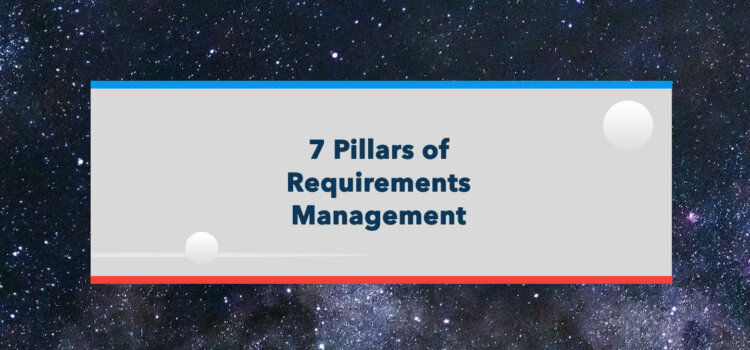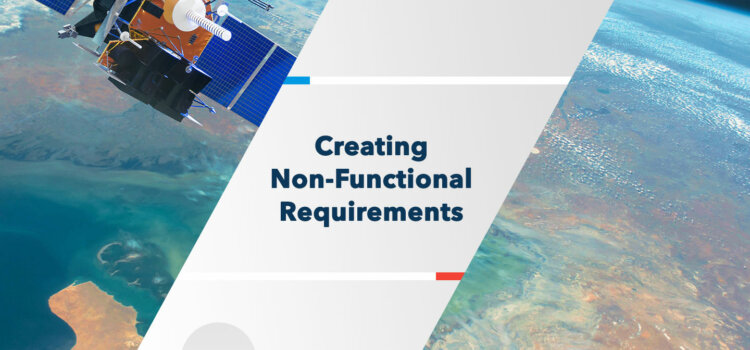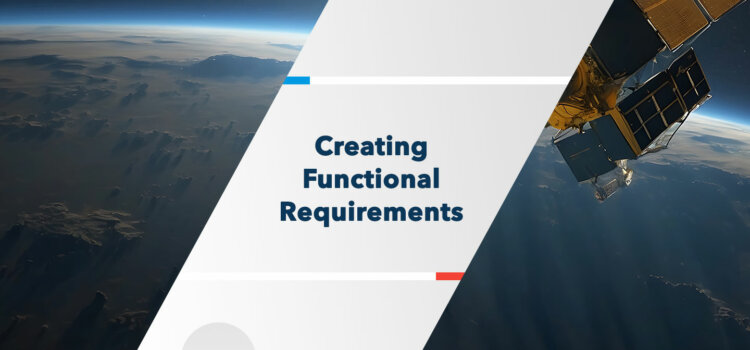
The 7 Pillars of Requirements Management in Engineering
29 Apr, 2025
Requirements management is the foundation of every successful engineering project. Without a clear structure for gathering, documenting, tracing, and validating requirements, even the best teams risk delays, cost overruns, and non-conformances.
Good requirements management is not just a helpful bonus. It supports consistent project outcomes. Building it right from the start can make the difference between success and frustration.
In this article, you will discover the 7 essential pillars of excellent requirements management.
Pillar 1: Clear and comprehensive requirements gathering
Strong requirements gathering techniques are critical for laying the groundwork for engineering success.
Use effective techniques: interviews, workshops, and observations
Effective approaches include interviews, workshops, and direct observations to capture explicit and hidden needs. Involving all relevant stakeholders early ensures that no crucial voice is missed, from customers to engineers to project managers.
Focus on essentials without overwhelming details
To keep requirements both complete and manageable, it is important to avoid overloading documents with unnecessary detail. Use clear criteria for what counts as a “requirement” and what belongs in background information.
Involve all stakeholders early
Focus instead on what is truly essential for decision-making and development: the stakeholders.
Pillar 2: Precise documentation standards
Clear documentation saves teams countless hours and significant costs throughout the project lifecycle.
Effective requirement documents are structured to be modular, testable, and prioritized. Popular formats include
- User stories
- Detailed requirement specification
- Acceptance criteria lists
These tools help you ensure that each requirement is understandable, achievable, and verifiable.
Poor documentation can lead directly to cost overruns, delays, and even project failure. Teams waste time interpreting ambiguous needs or chasing incomplete information without a structured format.
A structured format could be:
- Unique Identifier (ID): Assign a unique number or code to each requirement for traceability.
- Requirement Statement: Write a clear, concise, and complete statement describing what the system, product, or component must do.
- Category: Indicate whether the requirement is functional, non-functional, performance-related, safety-critical, etc.
- Priority Level: Define the requirement’s importance (e.g., Must Have, Should Have, Could Have).
- Rationale: Provide a short explanation of why this requirement is needed, linking it to business or user needs.
- Acceptance Criteria: Describe how you will test or verify that the requirement has been satisfied.
- Dependencies: List other requirements, systems, or modules that this requirement depends on or affects.
- Owner/Author: Specify who created the requirement and who is responsible for maintaining it.
- Version History: Track changes made to the requirement over time, with timestamps and descriptions.
- Attached data: Documents, non-conformances, risks could all relate to the requirement, it’s good to link them.
Precise documentation naturally supports building a system where every requirement can be traced back to its source. We will explore that next.
Pillar 3: Requirements Traceability
Traceability connects the dots between requirements, design decisions, test cases, and reviews.
A traceability matrix is an essential tool for maintaining this connection.
A traceability matrix is a structured table that shows the relationships between different project elements, typically linking requirements to other deliverables like designs, test cases, validation activities, and final products.
It ensures that every requirement is accounted for during design, development, testing, and delivery. In short, it proves that nothing has been forgotten and that every decision, component, or test can be traced back to a specific need.
Strong traceability dramatically reduces errors during design, manufacturing, and testing because you can easily verify that every requirement has been addressed. This avoids costly rework and last-minute surprises.
When you have a clear traceability system, managing changes becomes much easier. That leads to the next important focus.
Pillar 4: Disciplined change management
In engineering projects, change is inevitable. Managing it well ensures that changes improve the project rather than derail it.
Understanding the Change Request process
A clear, structured process for handling engineering change requests (ECRs) is essential. Before approving any change, teams must conduct thorough impact analyses to understand how it will affect scope, cost, timeline, and quality.
Change management tools are needed
Using purpose-built tools and workflows helps maintain control over document updates and stakeholder approvals. This ensures that changes are implemented thoughtfully and without confusion.
Hands-on verification activities in engineering projects
In engineering projects, especially within the space industry, verification activities must meet the highest standards to guarantee safety, reliability, and mission success. Below are key hands-on practices that are commonly applied.
- Unit and subsystem testing
- Environmental testing
- Integration testing
- Hardware-in-the-loop (HIL) testing
- Peer and design reviews
- Flight simulation and mission rehearsal
- Prototype and engineering model testing
- Static and dynamic structural testing
- Configuration and documentation audits
Pillar 5: Continuous validation and verification (V&V)
Continuous validation and verification ensure that you are building the right product the right way. The two mean:
Verification: “Are we building it right?”
Verification tests check whether the system meets the specifications and design requirements.
These tests focus on internal correctness and technical accuracy.
What types of tests fall under validation and verification?
Validation and verification are essential parts that you must be able to deduce from the requirements.
Validation: “Are we building the right thing?”
Validation tests check whether the system meets the user’s needs and intended use. These tests focus on external performance and customer satisfaction.
Common validation tests:
- User acceptance testing (UAT)
- Operational testing
- Performance testing
- Field trials or flight tests
- Mission rehearsal tests (for aerospace)
- System validation tests
Clear and comprehensive requirements naturally lead to the next step, which is how you document these requirements to maintain clarity and accountability.
Verification: “Are we building it right?”
Verification tests check whether the system meets the specifications and design requirements. These tests focus on internal correctness and technical accuracy.
Common verification tests:
- Unit testing
- Integration testing
- System testing
- Static code analysis
- Requirements review
- Design review
- Hardware-in-the-loop (HIL) testing
In short, verification tests prove the system was built according to the technical blueprint.
Both are critical, but they serve different purposes. Typically, integrating V&V activities into each project phase leads to fewer risks and fewer non-conformances, which is very important for large-scale projects.
Pillar 6: Collaboration across teams
Successful engineering projects rely on seamless collaboration between mechanical, electrical, software, and systems engineering teams. Strong communication strategies create the foundation for shared understanding and coordinated execution.
Key strategies for effective collaboration
- Shared tools: Using the same platforms for requirements, design, and testing promotes transparency and reduces misunderstandings.
- Common terminology: Agreeing on standard definitions prevents confusion across disciplines.
- Regular meetings and reviews: Holding scheduled cross-team reviews ensures issues are caught early and alignment is maintained.
Applying these strategies ensures that different teams and individual team members stay aligned on requirements.
Common pitfalls to avoid:
- Miscommunication: Unclear information sharing leads to errors and delays.
- Siloed workflows: Teams working independently without sufficient integration can create gaps and overlaps.
Strong collaboration is built on shared vision, proactive planning, and mutual understanding. Even separate teams can effectively work together when these elements are in place.
In addition, strong collaboration directly supports forward-looking requirements, preparing teams to adapt and innovate as technologies and project goals evolve.
Pillar 7: Future-proofing through flexibility and innovation
Requirements must be flexible enough to adapt to scaling, new technologies, and evolving customer needs. It is difficult to discover which technologies you will have to change your requirements for. It is good to have brainstorming sessions on this.
Think about:
- Technology evolves rapidly: New materials, tools, AI systems, and manufacturing methods emerge constantly.
- Customer needs shift: Expectations change, requiring systems that can adapt without full redesigns.
- Competitive advantage: Teams that adapt faster stay ahead of competitors in performance, cost-efficiency, and market leadership.
- Mission longevity: Especially in space and aerospace, systems may need to perform reliably for years or decades without major updates.
Simulations can also be done by methods like model-based systems engineering (MBSE) and digital twins.
Emerging technologies like quantum, artificial intelligence, and advanced simulation reshape how engineering teams handle requirements.
ECLIPSE offers a Requirements Management System
Working with an effective document and requirements management system helps you meet formats and documentation standards with ease and flexibility. Contact us now and discover how ECLIPSE Software Suite can help you with your Requirements Management.

Desmond Gardeslen
Product Marketing Manager
Passionate about the intersection of space technology, marketing, business, engineering, and innovation.



